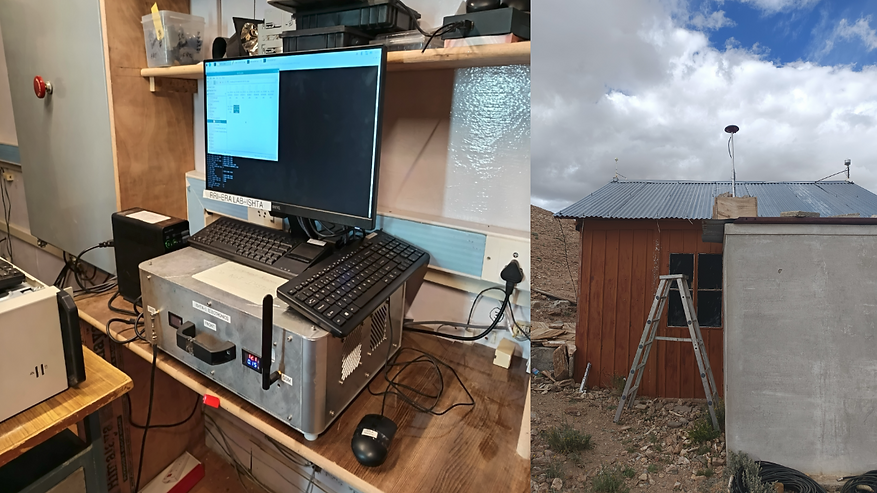RAMAN RESEARCH INSTITUTE


ISHTA
Indian Sub-millimeter Himalayan Telescope for Astronomy

The atmosphere is a vital constituent that affects astronomical observations differently for different observational frequencies. With ISHTA, we aim to characterize how the atmosphere behaves by doing an integrated measurement of precipitable water vapour (PWV) and determine how many kelvins in terms of noise temperature it adds to Tsky in the S-band cosmological experiment APSERa.
While India is moving ahead with plans of setting up a sub-millimetre telescope, we here at RRI have developed a portable and compact system that can be deployed in remote areas to measure the PWV in situ at multiple locations in the trans-Himalayan regions for site-quality analysis to choose the best site for the upcoming sub-mm telescope. This is essential since a primary requirement for effective sensitivity to the science goals in the sub-mm frequencies is a suitable site that has high elevation and a dry atmosphere.
The ISHTA-1 experiment uses differential delays between GNSS satellite signals at two different frequencies to determine the total zenith delay. This contains information about the total dry delay and total wet delay. The total wet delay is a proxy for PWV. The first ISHTA-1 PWV measurement system was deployed atop Digpa Ratsa Ri / Mt Saraswathi, IAO, Hanle in the summer of 2024, led by Dr. Mayuri S Rao, with lots of support from Electronics and Mechanical Engineering groups at RRI.
The long-term data collected by ISHTA-1 will be analyzed after a full year of operation and correlated/compared against other PWV measurements, including locally deployed radiometers and reanalysis data sets. This will provide the necessary inputs for scaling ISHTA-1 systems to other locations in the Ladakh region. The image above shows the compact, low-cost tabletop experiment housing the receiver electronics (left) and the GNSS antenna (right) mounted on the rooftop. The system also incorporated a health monitoring sub-system that relays the parameters like receiver temperature, humidity, currents, and voltages of the system to a remote receiver at RRI.